
Developing your own philosophy of "threes"
(As a tool for dissection and comparative analysis.)
http://threesology.org
Let's start this page with a few links to different perspectives of the "threes" phenomena.
- Biology as Poetry (3-to-1 ratio) (By Dr. Stephen T. Abedon)
- (Tricyclopedic) Book of Threes (By Michael Eck)
- List of Threes in human anatomy (By Dr. McNulty)
- Mathematical Dimensions of Rhetoric: Three is the dominant
numerical motif (By Dr. Allen H. Merriam)
- Phenomenology - Threefoldness (By Tom Van Gelder)
- "The Third Way of Evolution"(By James Shapiro, Raju Pookottil, and Denis Noble)
- Mystical Numbers: The Number 3
- The Power of Three: Why Fairy Tales
Often Feature a Triple
- Wikipedia discussions about various "3" denoted ideas
Here are three links for Dr. Dundez's article "The Number Three in the American Culture" which appeared in an old 1967-1968 book entitled "Every Man His Way" (which is a collection of different Cultural Anthropology readings):
And let me acknowledge the greatly valued assistance of Simon Kelsey whose own research and exploration efforts into the Threes Phenomena has offered invaluable insights and provided numerous links from which were derived ideas that have led to a greater understanding. I am indebited to him.
With respect to conventional research projects, the usage of numbers as an analytical tool remains encased in the respective matter of a given subject and is accepted as a desired and necessary tool. However, if one uses enumeration to analyze the material of multiple subjects, the approach is deemed unconventional and may be referred disparagingly to as "numerology", because the initial stages of constructing a greater level of research rigor is not permitted to develop; though every single subject today has had to undergo fledgling steps of hit and miss development like every single practice, be they of a sport, medicine, construction trade, mathematics, public speaking, etc... Whereas a person may be permitted to analysis the analysis of one researcher or multiple researchers of a given subject area, this is not necessarily the case for those like myself who strive to analyze large quantities of information from divergent subject areas. "Threesology research" is involved with the collection and analysis of "Big Data". Just because you wrongly interpret the usage of the word "threes" and its counterparts to mean a strict focus of research that only involves three-patterned examples, this is a personal problem of analysis you need to overcome. We research the presence, absence and intermittancy of "threes", because this too is a pattern-of-three. For example, if a "three" is present, what is its form/formula and where/why did it originate... including its usage as a tool of predictability. Likewise for its absence or intermittancy.
"Big Data" is a research methodology being developed for usage in multiple areas such as evolutionary biology, statistics, economics, demographics, weather, disease, etc... All of them are in the early stages of developing the protocols for collection, analysis and application... including the development of computer programs to handle such large collections. Yet, even the definition of "Big Data" is itself becoming 'big data' in that it is being interpreted and applied in divergent ways with both conventional and unconventional language references in an attempt by its users to increase their grasp of voluminous amounts of information that may have a better usage outside the mindsets they have formally used, including applications they may not have been cognizant of in present or previous interests. Huge amounts of data can introduce people to life altering directions and decisions. Big Data processing is a new territory that "Threesology" is very much a part of, even if those who come to this site do not appreciate the fact we harbor a research and development orientation.
And now a word for the weather: (Does death actually occur in threes?)

Hurricane scientists have never seen an image like this before
 According to Reader's Digest article, 3 PM is the best time to have sex. |
 |

City Blogger: How to Use the ‘Rule of Three’ to Create Engaging Content, by Brian Clark
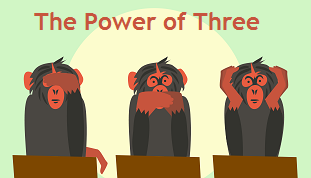 The Power of Three: Why do so many things come in threes? → Power of three video ← |
 Eminently Quotable (different versions of this image are in use) |
 IZQuotes: John A. Wheeler |
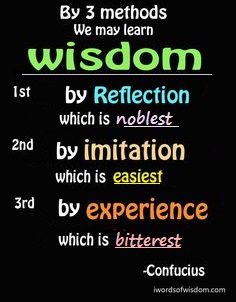 (Various illustrations exist) |
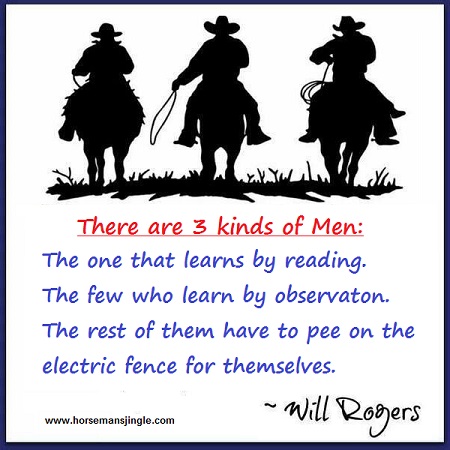 Cowboy Quotes |
 |
 Life in Ancient China |
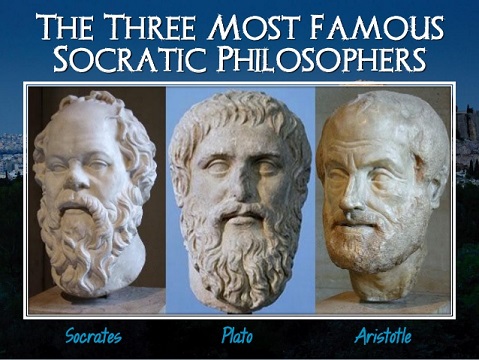 Ancient Greek Philosophy by Professor Will Adams |

The reason for including Alexander III of Macedon (aka Alexander the Great) to the line-up of Greek Philosophers, is that history tells us that Socrates taught Plato who taught Aristotle who taught Alexander. By including Alexander, we have discovered the existence of a 3 to 1 ratio example. (see: Three-to-one ratios page b) In decades past, I would see the "SPA" emblem of exercise/weight lifting businesses as I drove past them and would be reminded of the S.ocrates-P.lato-A.ristotle... Alexander sequence. Now such businesses use a variety of names and no longer rely on the old European-influenced monogram. |
|
With respect to the old three races of human categorization (Caucasoid- Mongoloid- Negroid), the following "3 types or kinds of people" in the world may well be a cognitive carry-over that is substituted into other considerations, because it is a set pattern in the brain structure of humanity. Even though some people argue against the traditional notion of 3 races and may claim there is either one human race, two races delineated by gender or Many races, they may in fact represent the "three" in their mental makeup in some other application with different information.
What? No Sheepherder?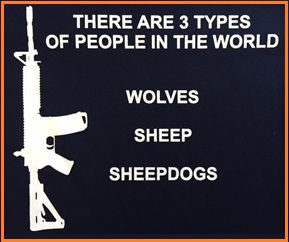
Liberty 1st.com |
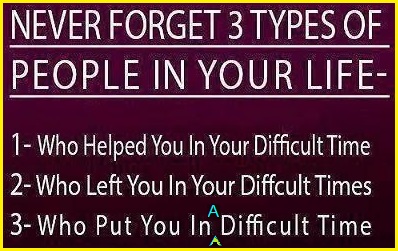 (Various illustrations exist) |
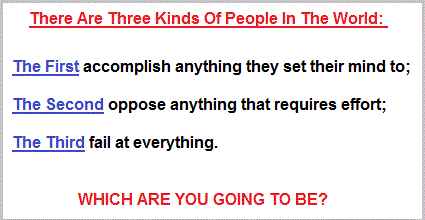 Crosshairs Trader: There are three kinds of people in the world (and in the stock market) |
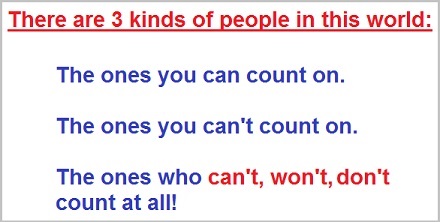 (Various illustrations exist) |
Here's a Series-of-Three that can be viewed as a recurring Matriarchal (or Patriarchal) archetype with ancient (hominid?, reptilian? amphibian? genetic?) roots.
The following three images portray a collaborative sequence that many have not actually looked for as occurring in different forms and formulas, not all of which have to be human or even animate. They could simply be portrayed ideologically like the Father-Son-Holy Spirit/Ghost theme, or Brahma-Vishnu-Siva, Child-Parent-Adult, Lower class, Middle class, Upper class, Dumezilian tripartite ideology (such as priests-warriors-artisans), Triple Entente, Wikipedia: Hecate, one of many different variations such as can be found in the Wikipedia: Triple deity article, or as an illustrated myth such as Cerberus (though maybe there was a three-headed dog somewhere), etc... It should also be noted that the idea of a "three"-headed version may have been preceded by a two-headed (Janus Faced) orientation which may have come after a one-headed design, though earlier ideas were not recorded in the way that a two or three-headed form was . This suggests a developmental trend in cognition, but that the developmental trend ends, like the three "stop" codons found in DNA and RNA.
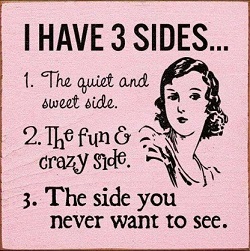 |
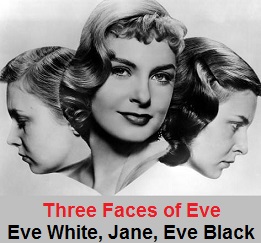 Wikipedia: The Three Faces of Eve |
(3 mediaeval colors: white, red, black)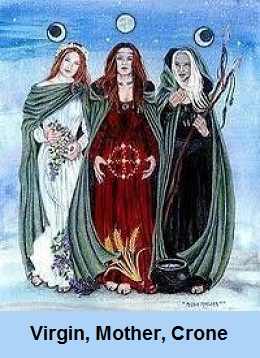 Moon Magic and Triple Goddess |
 MarkerHistory.com: Three Notch'd Road |
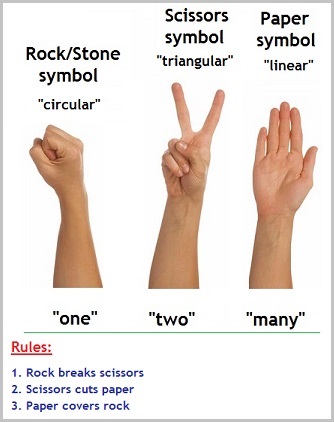 Updated perspective reflects underlying counting system and unrecognized geometric alignment |
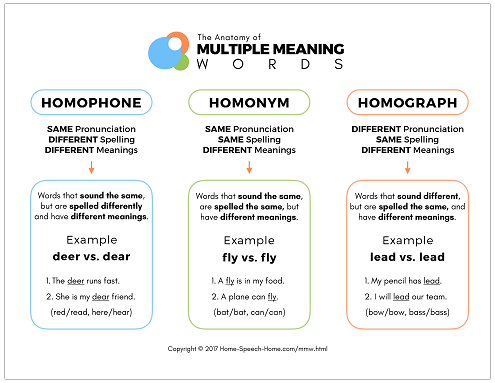 {50} 3-step directions |
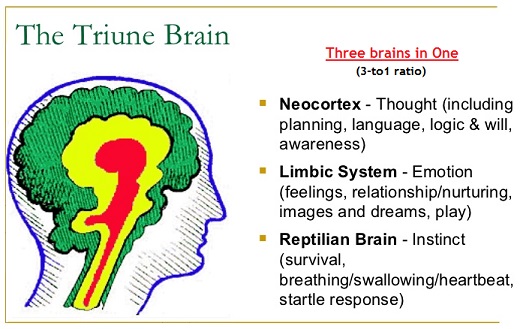 The Triune Brain |
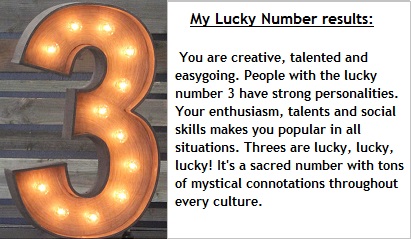
Just for fun, I took a "test" to see what my lucky number is at this site: What Is Your Lucky Number?. I left the following comments in a short post:
Imagine... me, a threesologist coming up with the number 3! One might think that I knew how to stack the deck in order to come up with a preferential number.
Again and again and again the "3" is directly or indirectly referenced, with or without one or more recognized or unrecognized additional patterns. And yes, it is true... if you look for a pattern you can find it... and even obsessively see a given pattern where none exists, or identify its obvious presence though others can not recognize it. Here are three more examples, this time dealing with specific crime and criminals, though it must be recognized that my experiences with criminals indicated the presence of an over-riding dichotomous world-view (such as they see the world in extremes, for example: good guy/bad guy, rich/poor/ my gang/your gang, smart/dumb, ugly/pretty, tough/weak, etc... because of an underlying impulsiveness that races past any "grey area" consideration.)
 Three Types of Sexual Predators |
 Youth Internet Safety |
|
Three Tiers to the Sex Offender Registry:
FEDERAL AND STATE SEX OFFENDER LAWS by: Ryan O'Neil, Research Assistant Wikipedia: Sex Offender Registry |
|
 Crime in the NFL |
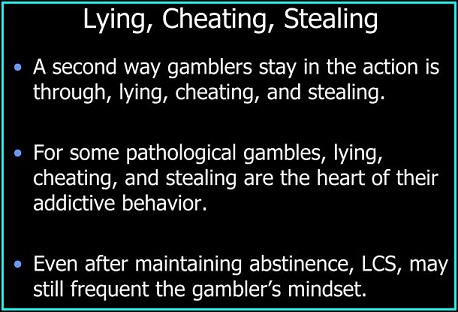 Psychodynamic theory and Gambling Translational Psychiatry: Are individuals with higher psychopathic traits better learners at lying? |
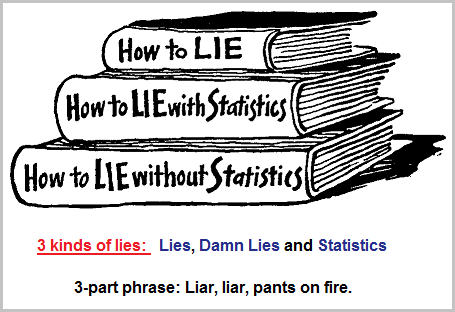
Is Sallie Mae Failing Student Loan Borrowers?
Wikipedia: Lies, damned lies, and statistics
What is the origin of the "Liar, liar pants on fire" rhyme?
I actually can't tell you how to develop your own model of using "threes" as an analytical tool, except to provide information on how I use it... though I use it as one might own a Swiss knife. The "threes" tool is not considered as a single tool with a single purpose. There is no "functional fixedness" implied whatsoever, though this too can be the criteria with which it is applied to support some desired rigor. You may or may not want to adopt a similar formula based on your interests and goals... since my methodology involves a lot of gathering in a very diverse collection. And yes, I am still in a "hunter-gather" mode in my application of threes and associated patterns. And yes, it is necessary to be aware that the usage of "threes as a tool" idea can become just another item of functional fixedness in some instances. An example of self-defeating functional fixedness can be seen in the U.S. government and political system, though other governments businesses, and religions have the same problem. Those in the U.S. government can't see past the bias of their own egos to solve problems, whereby they engage in frivolous "management" techniques as an excuse and coverup... though most often their problem solving efforts are stalemated by a Constitutionally-framed series of cognitive biases. The American people are in for a lot more trouble unless they can force a Constitutional change and develop a New Government (Cenocracy)... by way of a leadership that thinks differently than the traditional current biases. This is why Revolutions can be an effective way for change, because they often are an amalgamation of different ideas that solve problems in unexpected ways. The Current government looks at problems in very narrow, self-centered ways because there is more interest in personal enrichment than assisting the public in achieving a greater collective goal.

Functional Fixedness as a Cognitive Bias
Additional links:
Wikipedia: Functional Fixedness
Psych Central: Functional Fixedness

Better Humans: Cognitive Bias Cheat Sheet
| Obstacles to effective thinking A better understanding of the processes of thought and problem solving can be gained by identifying factors that tend to prevent effective thinking. Some of the more common obstacles, or blocks, are mental set, functional fixedness, stereotypes, and negative transfer. A mental set, or "entrenchment," is a frame of mind involving a model that represents a problem, a problem context, or a procedure for problem solving. When problem solvers have an entrenched mental set, they fixate on a strategy that normally works well but does not provide an effective solution to the particular problem at hand. A person can become so used to doing things in a certain way that, when the approach stops working, it is difficult for him to switch to a more effective way of doing things. Functional fixedness is the inability to realize that something known to have a particular use may also be used to perform other functions. When one is faced with a new problem, functional fixedness blocks one's ability to use old tools in novel ways. Overcoming functional fixedness first allowed people to use reshaped coat hangers to get into locked cars, and it is what first allowed thieves to pick simple spring door locks with credit cards. Another block involves stereotypes. The most common kinds of stereotypes are rationally unsupported generalizations about the putative characteristics of all, or nearly all, members of a given social group. Most people learn many stereotypes during childhood. Once they become accustomed to stereotypical thinking, they may not be able to see individuals or situations for what they are. Negative transfer occurs when the process of solving an earlier problem makes later problems harder to solve. It is contrasted with positive transfer, which occurs when solving an earlier problem makes it easier to solve a later problem. Learning a foreign language, for example, can either hinder or help the subsequent learning of another language. Expert thinking and novice thinking Research by the American psychologists Herbert A. Simon, Robert Glaser, and Micheline Chi, among others, has shown that experts and novices think and solve problems in somewhat different ways. These differences explain why experts are more effective than novices in a variety of problem-solving endeavours. As compared with novices, experts tend to have larger and richer schemata (organized representations of things or events that guide a person's thoughts and actions), and they possess far greater knowledge in specific domains. The schemata of experts are also highly interconnected, meaning that retrieving one piece of information easily leads to the retrieval of another piece. Experts devote proportionately more time to determining how to represent a problem, but they spend proportionately less time in executing solutions. In other words, experts tend to allocate more of their time to the early or preparatory stages of problem solving, whereas novices tend to spend relatively more of their time in the later stages. The thought processes of experts also reveal more complex and sophisticated representations of problems. In terms of heuristics, experts are more likely to use a working-forward strategy, whereas novices are more likely to use a working-backward strategy. In addition, experts tend to monitor their problem solving more carefully than do novices, and they are also more successful in reaching appropriate solutions. Source: "Thought." Encyclopædia Britannica Ultimate Reference Suite, 2013. |
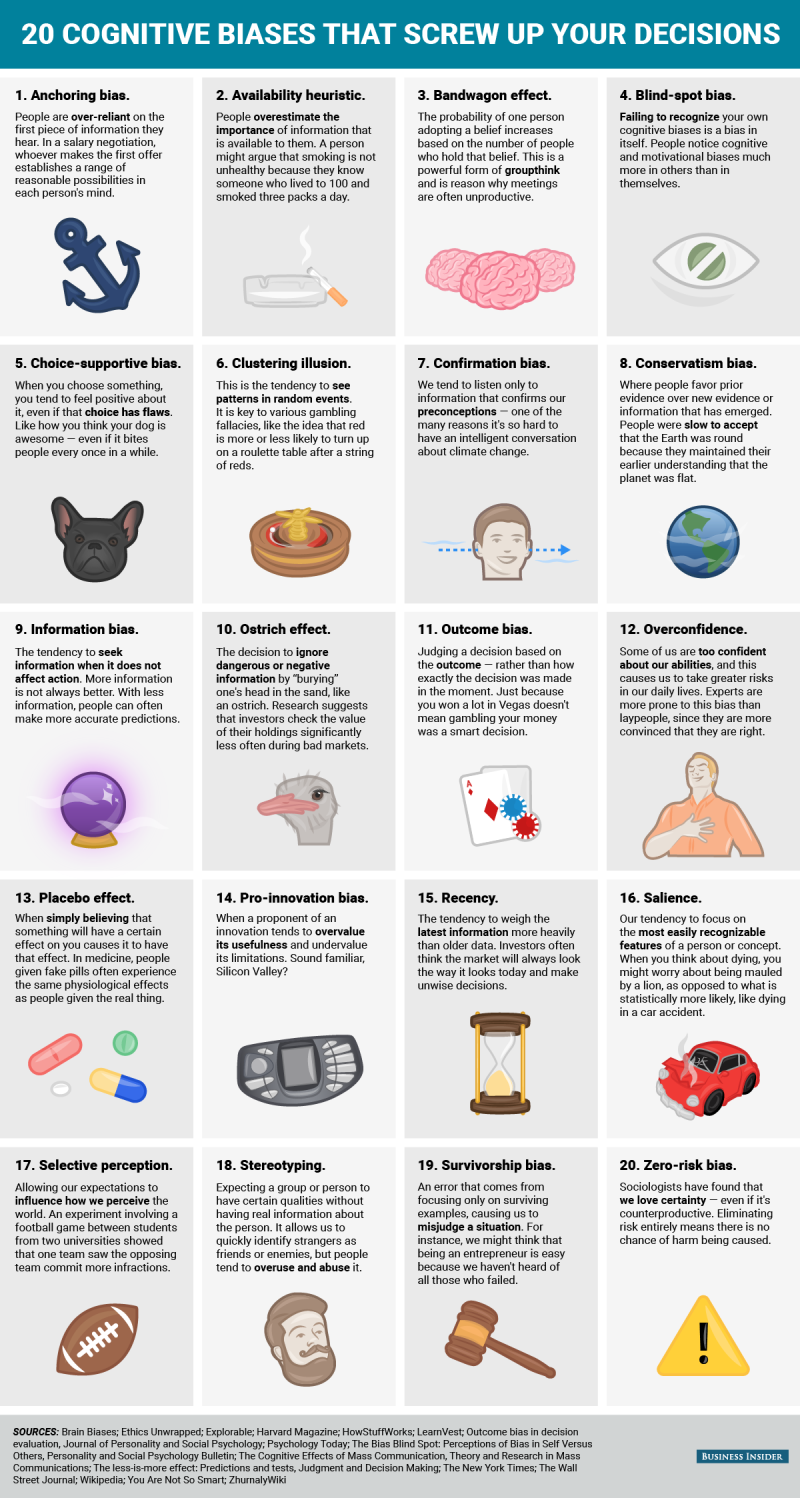
Life Hacker: 20 Cognitive Biases that affect your decision-making
In my attempt to provide instruction on the threes concept, do not expect me to provide a lesson plan nor objective in a step-by-step fashion like working out a mathematics problem in which you can "check my work" to see whether or not I have used what you expect to be seen as a commonly used algorithm since many of my excursions involve different subjects whose content may not be familiar to some readers, particularly when the discussion appears to veer away from simplified expressions of "three" items and provides abstract considerations involving a three-part "linear, circular and triangular" configuration as part of a larger pattern-of-three behavior all of humanity is engaged in, but may not be cognizant of because they have n to made the psychic connection between what otherwise appear to be divergent or disparate forms of information... until one realizes I travel to and fro between the thinking patterns of individuals and the overall thinking patterns of a culture, nation or the entire human race... with respect to my research interests, in as much can be ascertained from what has been recorded in easily accessible accounts.
For example, (and simplistically put), it is difficult for some to see the science behind an artistic expression or the art in a scientific expression. Some people do not think as broadly as they might claim themselves to be. No less, if you add bits and pieces of other subjects into the mix of an analysis, it may well give the impression of being a stew that has yet to be mixed correctly. In many instances, the approach I take is a black board drawing taking items from a kitchen drawer in which various items have been collected and referred to as a junk drawer or drawer full of stuff. Many of us work like this, even professionals.
For example, many a professor or business executive's desk may be seen as a dumping ground for various ideas and projects being worked on from time to time or at the same time. Though sometimes referred to as an organized mess or one's method of madness, many of us can identify with and understand that intellectual pursuits have a creative process which does not often follow a set routine and may even be described as chaotic, though those interested in the creative process (such as psychologists) have suggested it follows a generalized step-wise order such as described in a story about Graham Wallas:
or
preparation→ incubation→ illumination→ verification
.... Even though alternatives to these may be represented in altered form, the following three types of models, (a linear, circular, and triangle scheme) are instructive since they also display differences in numerical associations represented in non-number form that need to be pointed out for those involved in the cataloguing of cognitive patterns. along with this is that though a process may be illustrated in a given geometric or numerical form does not necessarily mean the actual process has been identified as it occurs, only how a person imagines it does or is able to portray it to others:
A Linear Model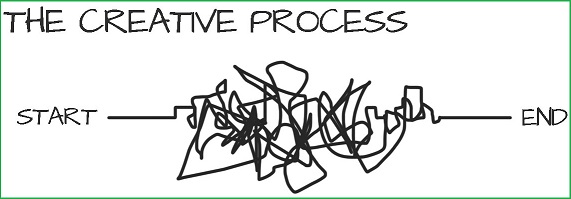 The Creative Process |
Linear model of AMP, ADP and ATP generation Biological and Physiological 3s page 1 |
A Circular Model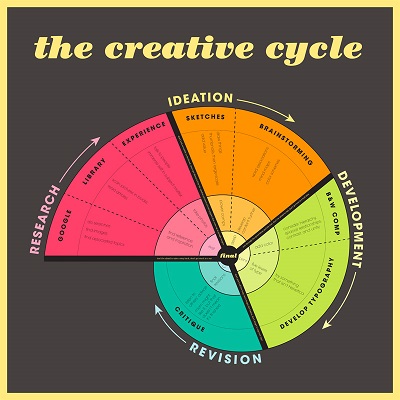 Cody Wallis, design and illustration |
Simplified circular model of Krebs (Citric Acid) Cycle |
A Triangular Model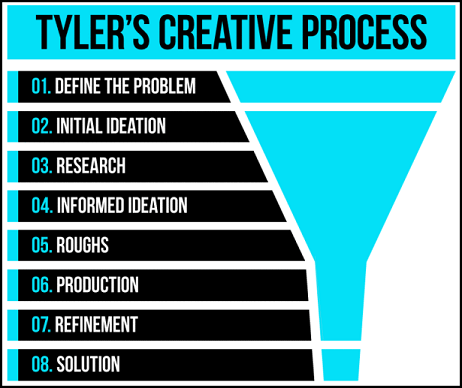 Tyler Brown art and design |
A triangular (hierarchy) model from psychology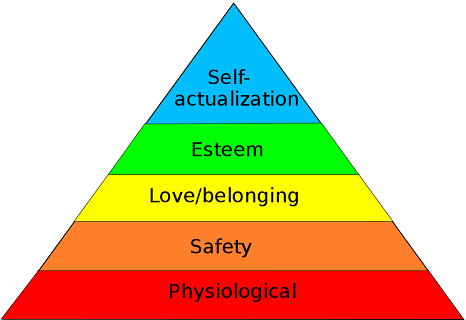 Wikipedia: Maslow's hierarchy of needs Wikipedia image file Lewis Brooks: My Questionnaire |
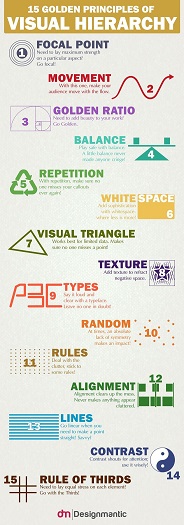
While different people may use different numerical values in attempting to describe a step-wise fashion to the creative process, what needs to be acknowledged is that all of them comprise a model of limitation, which no doubt references a limitation to imagination and overall thinking processes. There are of course others who simply attempt to describe their own experiences of creativity to which is applied a quote: Creative Process Quotes. The creative process, it seems, is different for different people in their respective behavioral routines (that they may forcefully claim is not routine), or at least many think their particular creative process can not be easily described by any numerically listed formula, thereby indicating to them that their's is as unique as what they create. But some people do not respect creativity on its own merits. They want it to be of practical value which affords someone with some social or financial gain. Visual tools are helpful, though what I visualize may not be what another sees. Sometimes I use simple images for complex ideas and complex images to express simple ideas, because they are helpful under different circumstances... though I admit they are not always as thought provoking as I interpret them to be.
Source for visual hierarchy image: Various charts on different processes
As an introduction to the series of pages entitled "Anatomical, Biological, Physiological" threes, the following image can be used to illustrate a a pattern-of-one, pattern-of-two, or a pattern-of-three. The image as a whole is a "one", the pictures contrasted to the words is a "two", and associating the overall content with labels sometimes used to describe the three families of fundamental particles (stable, unstable, highly unstable) as a feature representing mutation occurrence differences, we uncover the presence of a "three" that has a far reaching implication if the correlation has an application to actual occurrences. In other words, whereas we identify the characteristic of different toe quantities as representing "stable" mutations, and the anomalous occasions of six, seven, etc., toes as indicating unstable mutations, this leaves us with the absence of an image which would show a model of the "highly unstable"... though in a conversation describing such in physics, this might well be indicated by the existence of particles with a fast decay, and on a biological level would be mutations that may or may not occur at any time during processes of cellular development... thereby indicating an unusual algorithm needed for predictability.
This image displays a pattern-of-three though some readers may not be able to see this unless it is pointed out:
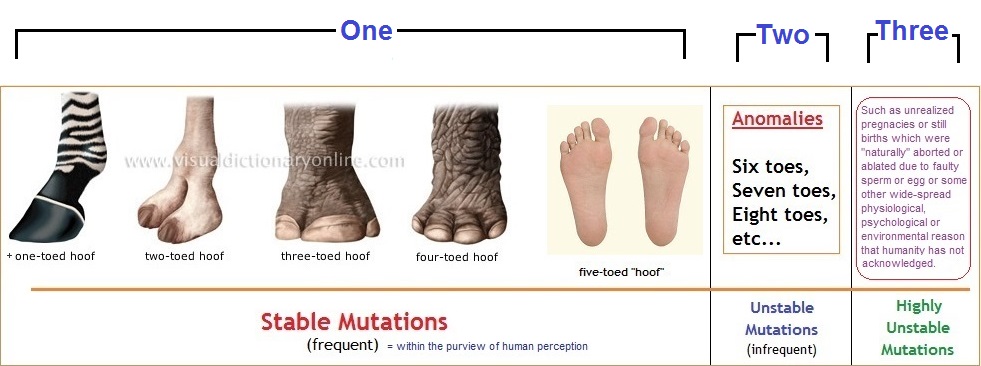
(Human genius, in terms of conventional applications in a given era, is not a stable mutation, but genius in terms of its occurrence in human populations is a stable mutation. However, humanity does not yet know how to deal effectively with its many occurrences in its many forms... particularly in cultures whose allegiance with tradition is an obsession.)
The above example of a pattern-of-three is part of a larger discussion on: Anatomical, Biological, Physiological page 6.
Because there are so many subject areas in which a "threes" interest may be applied, a page such as this can only provide an introduction to the concept of using a number such as "three" as a tool to compare and dissect multiple forms of information. For example, let us say that you have an interest in Children's literature and are attracted to the notion of how often the value of "3" in its different forms show up, particularly in Fairy tales and other linguistic activities that have moved on from a strictly oral tradition to one which embraces a literary, artistic and motion picture captioning one as well, (and may result in an altered story):
*** Some children's stories, games and other 3-patterned linguistic formula:
(Yes, you may know of or encounter variations which describe more or less characters or situational events... but all of them express a widespread cognitive limitation taking place with humanity, which gives an indication that something is forcing humanity to repeatedly use a limitation as a survival mechanism because of an overall planetary system that is deteriorating, resources continue to dwindle, or humanity does not have the knowledge nor technical skill to take advantage of available resources in their raw forms.)
3 bears: Papa bear - Mamma bear - Baby bear (the inclusion of Goldilocks makes this a 3 to 1 ratio)
3 days, 3 attempts to guess his name: (Rumpelstiltskin)
3 fiddlers: Old King Cole
3 children family: John - Wendy - Michael (The inclusion of Peter Pan makes this a 3 to 1 ratio)
3 notes used to rid a town of rats & get children to follow into a mountain (Pied Piper)
3 characters: Wynken - Blynken - Nod
3 men in a tub, Rub-a-dub-dub
3 brothers: Peter - John - Boots (Boots & his two brothers)
3 Princes of Serendip
3 beans: Jack & the Bean Stalk (another version has more than three beans)
3 months: May -June -July (A swarm of bees)
3 daughters: Rich merchant had 3 daughters in Beauty & the Beast (other versions exist, and inclusion of merchant makes this a 3 to 1 ratio)
3 little ghostesses sitting on postesses
3 beautiful white swans: The Ugly Duckling
3 bends in the road: Childe Rowland was told by an old woman to travel to the 3rd bend in a road
3 score miles and ten: How many miles to Babylon
3 sisters: The Golden Goose
3 children, 3 handsome sons: The Six Swans
3 pigs: "Not by the hairs of our chinny-chin-chin"
3 times 3 she cast her spell, kisses 3: The laidly Worm of Spindlestone
3 brothers: The Golden Bird
3 character Aesop Fable: The Farmer, His Son, The Donkey
3 score & more of girls: The Ass, The Table and the Stick
3 headed beast: The Sea Maiden
3 loves: King loved to Laugh, a good Joke, a Riddle (The Flea)
3 sons, 3 horses, 3 golden apples: The Princess who lived on a glass hill
3 hearts: Queen of hearts - Knave of hearts -King of hearts
3 repetitions of Hector Protector
3 sisters: Cinderella - Anastasia - Drizella (by adding the Prince (or step mother), this becomes a 3 to 1 ratio)
3 part bark: Bow-Wow-Wow (Little Tom Tinker)
3 rhymes, 3 port utterance: Fudge, Fudge, Tell the Judge
3 Cadenced cheer: Hip! Hip! Hur-ray!
3 Cheers for Red, White, Blue
3 categories of people in Snow White and the Seven Dwarfs: Wicked Step Mother- Snow White- Seven dwarfs (if we add the woodsman who was to kill Snow White, we come up with a 3 to 1 ratio.)
3 to 1 ratio cheer: For he's a jolly good fellow (repeated 3 times followed by "Which nobody can deny")
3 to 1 ratio Birthday expression: Happy Birthday to you (said twice followed by "Happy Birthday to ...someone..."), followed by another "Happy Birthday to you"
3 pennies: 1 on the Avenue, 2 an the Sea, 3 on the Railroad (out goes he/she)
3 monkeys jumpin' on the bed, 2 monkeys jumpin' on the bed, l monkey jumpin' on the bed (different versions exist)
3 part call: Red Rover-Red Rover-Call/Send he/she right over
Source for most of the items in the above list: Threes Poster- column 4
While those interested in Children's Literature may be introduced to the phenomena of a "threes" repetition and may even follow up with associating other three-patterned examples from one or more other subject areas, they may not pursue it from the perspective of a research philosophy which permits changes as more and more information is gathered and looked at from varying vantage points. Some of those who encounter the threes repetition may simply conclude it as an indulgence in numerology, because their information was largely taken from those engaged in numerology (or astrology, tarot cards, etc.,) who have created an unspoken mental tabulation, or verbalized, or listed various number-related examples for purposes other than an attempted analysis as an environmentally influenced anatomical, biological and physiological dimension related to the presence of environmental deteriorations. In general, it appears that humanity is engaged in a very rudimentary form of basic counting in elaborate ways... as an extension... as a metaphor of environmentally influenced physiological processes undergoing required survival adjustments as the Sun-Earth-Moon trio continues to deteriorate... and that small changes can have devastating effects.
If we look at the development of mathematics over the centuries, it must be remembered that present mathematics is the result of accumulations from different cultures. This is not to say that one or another culture would not have eventually developed another culture's mathematical techniques, it merely points out that the rise of mathematics took place by way of sharing simplified forms of counting that were compounded and abstracted. The symbols we use, the order of operations and the agreed upon results tell of an unrecognized conservation effort being imposed on humanity as a symbolic representation of deteriorating environmental conditions, of which human-made pollution is but one segment thereof. The required showing of "mathematical proofs" is a socially imposed and expected limitation for which many would rationalistically argue in favor of so that we all "stay on the same page", or in other words, go down with the ship together. Hence, there not only is a concerted effort to justify the requirement of proofs, but that everyone adopt a rationalized acceptance thereof... because we don't know how to think outside the box which is deteriorating with us in it. And no matter how much it deteriorates, many people will continue to defend their philosophy of clinging to the apron strings of "mother/mommy" Earth, instead of severing the umbilical cord and develop a new counting and mathematics system that is not constrained by a deteriorating environment.
Instead, we choose to find the same symbols in nature which represent shared ideas to which we attach sentimentality to, without taking stock of our repetitiveness in utilizing symbols that will be applied to the development of rationalizations which assist in our overlooking our efforts to survive in a deteriorating environment, and adds to the other intellectual embellishments already in use. Are numbers and letters natural to nature, or only because we fail to recognize the existence of others in our presence due to adaptive constraints being imposed on us?
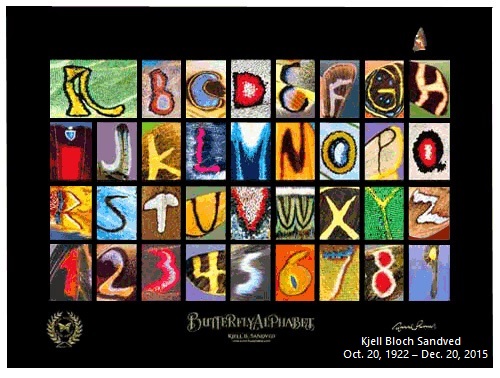
(The Qwerty keyboard contains numbers, letters and symbols.)
With respect to the elaboration of a simplified counting scheme— for example, we have only ten individual symbols (0123456789) representing a cognitive limitation that elaborates this limitation by a series of doubling, tripling, etc., these ten numbers, though "10" is itself a product of two separate numbers associated together. Likewise, we don't see a separate word being used beyond the "Large" size used in clothing. We simply add one, two, or three more X's to the word "Large". Each of these examples represent cognitive limitations resulting from environmental pressures associated with a deteriorating planetary system that forces biological (and thus physical, emotional and mental) adaptations ("rationalizations") in order to maintain some semblance of equilibrium. As deteriorations in business, government and religion continue... thus altering the overall moral compass of society, we will witness deteriorating changes in morality that are supported by socially accepted rationalizations with which are further supported by changes in those working in the various fields of science... and that sociologists as well as cultural anthropologists may shrug off as just another trend... but do not realize what the trend represents. To give an example of deterioration one may easily cite the adopted cultural acceptance of disfiguring the body with tattoos or jewelry piercings, and the many forms of "alternative" sexuality, though adherents thereof would no doubt offer their own flavor of rationalized acceptance; and provides a testament as to the degree and manner in which future acts of deterioration will be defended as resources continue to dwindle and populations increase.
Looking at Children's literature from different cultures might well reveal a similar pattern, or some other number-pattern frequency... even though some prefer to use the language of sociology or psychology such as relationship, family, relatives, neighbors, loner, fringe group, demographics, etc., all of which are nonetheless quantifiable... but are usually quantified with a very narrow analytical philosophy constrained by the focus of a single subject. In any case, we are dealing with language and of course the anatomical mechanism of hearing, yet we can not forget about biology and physiology or deteriorating planetary circumstances as influences on these developments. However, most people simply stick to conventionalized academic models of analyzing culture and society, as if these alone have some over-riding value on the presence of such a phenomena as the "threes" occurrence. No less, someone studying cultural anthropology might want to argue that it is culture which determines the usage of a number pattern since other cultures have used other number patterns such as for example, Native Americans using the number four or a Chinese emphasis on the value of number 5,... etc. Some cultures or social activities are more number oriented than others, even though participants may not be fully aware of their engagement with repetitive cognitive activity where one or more numbers are particularly repeated.
However, the problem is that most people overlook that... regardless of culture... there is a conserved usage of number in all of humanity. Even if a culture uses the values of 10,000 or some Million, Billion, Trillion reference on occasion. In other words, we don't have cultures who use a linguistic application of large numbers for their stories and day-to-day communications, though individualized exceptions do arise. For example, a person may boast they have two lovers, or three lovers, or a hundred or so lovers, but never thousands or millions unless it is meant as a specialized (non-wide spread) personal joke that would surely receive some disapproval or disbelief from others. This conservation of quantitative value usage means there is something which is causing the imagination and ability of humans to be constrained to use small number associations. It speaks of a regularity that can be monitored for change over large expanses of time, such as the increase in the usage of three-patterned perspectives by cultures who have been forced to abide by the views of another, such as in the case of the Military Occupation of one culture over another. For example, the Japanese may well use more three-patterned associations due to the presence of Americans over time since it appears the Japanese used less three-patterned orientations prior to the occupation, but that the American usage of threes was increased by its occupation of Germany because the Germans were more three-patterned oriented. And despite the increased (or more specialized) usage of a two-patterned orientation due to the binary code in computers, the code is being suffused with three-patterned boolean logic and other three-patterned applications such as the minimize-maximize-close (horizontal line, box, X) options for screen viewing placed at the upper right corner position.
Alan Dundes' article "The Number Three in The American Culture" found in the book "Everyman His Way", concludes that "Trichotomy exists but it is not part of the nature of nature; it is part of the nature of culture". His conclusion of course is based on the material he is analyzing, of which there is an absence of a list of examples as simple as the fact that we are on the third planet from a source of (solar) energy and that both DNA and RNA use triplet coding systems, or there exists the idea of three larger nuclear particles designated as protons, neutrons and electrons— much less provide a List of Threes in human anatomy.
While someone may want to stress cultural reasons for the repetitive usage of a given number pattern, it is necessary to take into consideration the development period in which such occur. For example, there may be a developmental difference from one culture to the next with respect to their physical, mental and emotional makeup due to differences in long term exposure to given foods which supply their own levels of vitamins, minerals, carbohydrates, proteins, etc... Though we of today may not be able to access them, or want to publicly announce any evidence we might uncover due to the possibility of being labeled a racist... or subjected to some other verbal weapon of one or another group; it is a consideration that needs to be taken into account when distinctions between cultures, ethnic groups or individuals are taken into consideration.
Surely it is not too difficult to understand the impact of long term poverty, war, drought, disease, (or insensitive businesses, governments, religions— such as in the case of the Irish potato famine), etc., is on the developmental parameters of people. Nor is it too difficult to appreciate that certain foods of cultural usage provide a repetitive dietary formula by which a given population is subjected to for growth through multiple generations. National pastimes such as eating hamburgers, pizza, hotdogs and the like do not give a good indication of a person or group's dietary regime, since many people engage in the usage of specific diets in order to "eat to live better" instead of merely living to eat more of the same junk food. In short, when assessing cultural differences, we must take into account dietary uses of available resources during the period when a given cultural pattern was developed.
No less, we must also take into account that government sponsored dietary regimes may be linked with their interest in promoting a given industry or agricultural item because of an underlying financial gain to be acquired. For example, it is particularly pathetic and stupid to have a National dietary guideline created by any department of a business-oriented government, much less a department of Agricultural interested in promoting the consumption of certain grains because of its ties to certain companies. Such a situation reeks of dishonesty because its foremost concern gives the impression of wanting to keep certain industries fiscally viable, whereas the health of the public is of secondary or tertiary consideration... that is if they are at all conscience of the hypocritical situation in which they work.
It is particularly simplistic for anyone to attempt cultural comparisons of pattern usage used in linguistic and non-vocalized (such as writing) expressions, without taking into considerations the patterns to be found in physiology on an anatomical and biological level, or even in such patterns as a person engaging in:
- holding a pen or pencil with three fingers
- ending a sentence with a period (declarative/imperative), question mark (interrogative), or exclamation point (exclamatory/imperative)
- nouns are persons, places, or things
- use of three different tenses such as ring-rang-rung, sing-sang-sung, etc.
- 3 types of prepositions: place-time-direction
- 3 types of test questions: true or false, multiple choice, essay
- pursuit of the Bachelor's, Master's and PhD
- exercising three days a week
- eating 3 "square" meals a day
- choosing a science, art and alternative elective course for a well "rounded" education
- associating with three types of friends, all of whom are not necessarily on the "straight" (linear) and narrow
- seeking a career path with three options leading to a culminating "apex" (triangle tip)
- chooses to live in moderation instead of the two extremes
- has 3 children and/or 3 pets, or arranges items into a small, medium, large setting
- etc...
With respect to the so-called "four" pattern cited as a common usage amongst some Native Americans, I had a chance to listen to a recording of some drum beating that was being played at a loud volume by some Native American neighbors. There was a distinct three beat pattern followed by one beat, meaning this "four" could be interpreted to be a three-to-one ratio. In any respect, it is necessary to note that people sometimes can and do impose preferences on perceptions. In other words, where you see a "four" another may see a two-by-two or three-to-one. Likewise someone may see a five or seven and another see a 2 X 3 or 3 X 4, or some other combination. Nonetheless, it is again necessary to point out that low numbers are most often used, even though humanity sometimes claims its imagination and mental abilities are potentially limitless. We may be able to count to a trillion and beyond, but something is constraining us to small limits.
If there were no such limitations being imposed, then we might well see more than two nucleic acids, or three fundamental nuclear particles. We might even have a nucleic acid such as DNA or RNA with a thousand codon system instead of a triplet one. If the number seven or five or 13, etc, was so important, then one might wonder why we don't have ten heads, 470 eyes, or live on the 13th planet from a Sun. Yet, trying to relate the importance of any given number to a religious idea or Eastern philosophy is more of the same type of rationalization cultures typically engage in as a means of providing support for their respective views. Yet a repeating pattern associated with a number can be used to validate something good or evil, such as in the case of the Trinity or 666 value used as an alternative description of the anti-Christ, where the "Christ/anti-Christ" duality is itself the expression of a "two" pattern.
Many, if not most or all of us engage in the usage of identifying number patterns, though the usage may be concealed by the application of words or actions instead of numbers. Indeed, a person may well use a number reference on one occasion and then use a word on another, and then a gesture at yet some other moment, but still reference the same underlying pattern. For example, a person may have three pets or three kids and then associate with three friends or go to three stores on the way home from work... all the while being oblivious of the fact that they are engaged in a repetitive usage of a "three" value. The same goes for other number patterns. In fact, a person's "three" may exhibit the pattern of a one, two, three formula of a "three set" at a different time of a given hour, day, week or even month. While identifying patterns over a long period of time is difficult, it is not impossible. In fact, some people may be able to perceive patterns over long expanses of time that are related, because for whatever reason (or purpose), they are "tune into" the perception thereof. One might even speculate that such an ability may be problematic for some because it makes them appear to be out of step with those in their respective social setting who are not "naturally" enable to do so. Their behavior exhibits that of a person who is "weird" or "different" or "strange" or "unusual" in the sense of not being like everyone else. A circumstance many are personally aware of with respect to their own qualities.
In the development of my own interest in what has been referred to as the "threes phenomena", I have come to realize it requires a philosophy not covered by religion, numerology, folklore and the other standard reasons such as superstition, coincidence, etc... Because it appears in so many contexts, it is necessary to look at a cross-cultural and cross-species analysis of anatomy, biology, physiology and the planetary influences thereof. For example, does being on the "3rd" planet in this solar system influence the development of a triplet coding system in DNA and RNA, or do we write this off as a coincidence or choose to explain it by some sort of religious interest? If the many instances of threes is due planetary circumstances, will the instances be forced to adapt to the planet as it changes with respect to decay?
Does the presence of other-than a three pattern occurring in biochemistry and elsewhere actually refute the value of "three", or do they all represent a larger premise that has not yet been considered? For example, though we recognize patterns of one and two, we also see them in an association to the "three" such as in the case of Three Germ layers (Endoderm- Mesoderm- Ectoderm), thus revealing a 1-2-3 maturational development sequence. Such a case suggests that some instances of singular patterns may have occurred along a similar course of development but that the earlier stages are no longer available, are in a place distant from what is being observed, or we simply aren't looking for them. For example, surely such number patterns as four, five, six, seven, etc., had to begin with lower numbers, even if these lower number values are no longer present to be seen in the usage of a larger number. Indeed, accounts providing a history of number development of different peoples in their distant past speaks of a number value development using a "one, two, many" system, though a "one", "one-two" system no doubt preceded the third value. And just because we of today count into large numbers, overlooks the usage of the comma to separate or group three number items in order to designate the next higher order of counting.
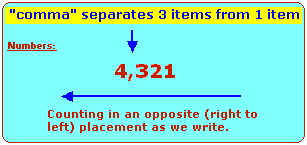
Bio-Physiological 3's page 3
The following youtube presentation can easily be described as an illustration of the "One-Two-Many" reference of an ancient counting system placed into a modern setting. Be forewarned that the speaker's brand of English may at first be difficult to understand for some viewers:
Let us not forget that higher or larger number values are achieved by duplicating smaller numbers, and is a behavior seen in infant babbling called "reduplication" such as Ba-Ba-Ba, da-da-da, Na-Na-Na, etc. Hence, counting might be referred to as an extension of babbling because the brain of humanity is being forced into developing in a conserved manner as a survival mechanism in a planetary environment headed in the direction of a demise along an incremental course of decay. Survival requires a given type of adaptation that involves repetition such as reflexes, mirror-imaging, etc... found in physiology and bio-chemistry.
There are three planetary decays we can't do anything about, regardless of all or preservation efforts which only serve to delay the amount of pollutions caused by humanity. The decays must be interpreted in terms of human existence and not the time periods being associated with the object under review. In other words, though the demise of the Sun's energy may take billions of years, we must be concerned with its effects on the impressionability of life forms with respect to the life span of a species, even though we may not have a suitable means for detecting such effects other than that typically cited in biology texts concerning long-term adaptations:
- The Sun's energy is depleting. It is on a course which is thought to involve an enlargement which may engulf the inner-most three planets. As
it enlarges, it's three "moments" (dawn-noon-dusk) will "fuse" together as it approaches Earth, thus affecting biology to adapt to the 3-in-1 fusion.
(By viewing the Sun as it approaches Earth in its expansion, the 3 life-affecting "moments" will appear to fuse together. The appearance of dawn,
noon, and dusk are circadian rhythm influencing events.)
- The Earth's rotation is slowing. This affects the geomagnetism due to changes in the dynamo effects of the molten core.
- The Moon is receding. This affects the tidal behavior that I refer to as the "washing machine" effect, which is vital for the biosphere in its many dimensions.
Yes, there are other patterns besides the "three", some of which may not typically be assigned with a number value... and is a task some would prefer not to because it might reveal an inconsistency in thought or perception. Some people prefer to be steeped in generalities and define their efforts as a specificity in order to conceal the lack of specificity other than the generality. However, some generalities are a work-in-progress towards a greater specificity that may take them years, and few if any may appreciate their efforts though they pursue their interest despite interruptions.
Day after day I have encounters with patterns-of-three such as in advertisement slogans, overheard expressions, or coming across an instance thereof that others nearby are oblivious to... and upon mentioning the occurrence in the context of a larger vocalized list, I frequently get looks of either amazement or bewilderment. One person said I had way too much time on my hands, as a means of covering up his lack of knowledge in anything but the tasks of his warehouse job. Some people are quite taken aback at such a reference since they are not accustomed to thinking in such a pattern, or dabble in some other pattern that they may claim is their lucky number such as seven or thirteen.

With respect to the number Seven, there is an old monograph by a George Miller entitled The Magical Number Seven, Plus or Minus Two (Some Limits on Our Capacity for Processing Information). The problem is that his usage of the "plus or minus two" comment means that his title is actually referencing three numbers (5-7-9), but no one reading the paper has made a point in his usage of three numbers while emphasizing one. With such an understanding in mind, his paper should have been entitled "The Magical Numbers Five, Seven, and Nine". Incidently, no one makes a reference to the possibility that he may have well used three fingers to hold a pen or pencil in which to write the paper (unless he used a typewriter) or that there are only three punctuation symbols he could use to end a sentence with. In other words, the paper wasn't written while holding a pen or pencil with seven fingers. Nor was he attempting to acquire more than three college degrees in his overall academic pursuit. In short, the "seven" idea was created with many unrecognized patterns-of-three... not patterns-of-seven.
While he and others have worked in the area of cognitive limits, they didn't compile examples of these limits occurring in Anatomy, Biology and Physiology, but also physics, chemistry, mathematics, etc... For example, the triple coding system of DNA and RNA are limitations just as it is for life having been developed on the Third planet. No less, particles in physics express three-patterned organizational formulas which either describes a coincidence of the Universe being tossed about like dice and ending up on the value of three, or there are distinct environmental pressures which force the limitation as a survival mechanism with respect to incremental planetary deteriorations of which human-made pollutions is but one aspect thereof.
Here's another reference to the Miller article: Wikipedia: The Magical Number Seven, Plus or Minus Two
Page initially created: Friday 08-Aug-2017... 4:27 AM
Initial Posting: Tuesday, 29-Aug-2017... 3:10 PM
Updated Posting: Thursday, 9-Nov-2017... 8:40 AM
Most Recent Reposting: Thursday, 12th April 2018... 10:55 AM
Herb O. Buckland
herbobuckland@hotmail.com
